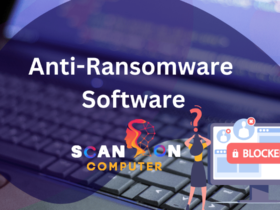Unified Endpoint Management (UEM) tools represent an advanced replacement or alternative for EMM (Enterprise Mobility Management) and CMTs (Client Management Tools). Many come equipped with their own built-in, integrated or customizable client management features as well as integrations or interactions with UEBA solutions, Unified Threat Detection Response systems, or other security tools.
Businesses are steadily adding endpoint devices like laptops, desktops, tablets and mobile phones to their networks – necessitating central management and security solutions for these new endpoints.
What is Unified Endpoint Management UEM?
Unified endpoint management (UEM), is a set of software tools used to remotely monitor, secure, and administer all devices connected to an enterprise network – whether they be desktop PCs and laptops, smartphones, tablets, smartwatches or even IoT devices. IT teams can utilize UEM as a central platform that enhances security while simplifying management by using just one tool.
UEM represents an advancement of MDM/EMM suites as well as traditional client management tools (CMT), by adding functionality that bolsters device administration and data security – such as threat detection, mitigation and remediation capabilities, software/OS deployment options, logging/patch management functions, remote control options and much more.
Unified Endpoint Management Boosts Security and Simplifies Management
UEM tools also support most operating systems found on desktop PCs and mobile devices, including Apple iOS, Android, Google ChromeOS, Microsoft Windows and Linux. Furthermore, some UEM platforms enable admins to create an app store where employees can download enterprise or personal apps to their devices – as well as implement security features into those apps such as encryption methods, password nature/challenge mechanisms, remote locking/wipe/DLP controls etc.
Differences between MDM and UEM
UEM tools offer comprehensive device and endpoint management capabilities, from smartphones and PCs to printers, IoT sensors and POS terminals. IT teams can use its central dashboard interface to access all these assets quickly. This unified approach enables businesses to increase productivity while protecting critical infrastructure and sensitive information.
Formerly, IT and security teams had to use multiple tools and policies for every type of device or network connection – creating extra work while leaving more chance of inconsistencies or errors that left networks vulnerable to attack. UEM reduces this burden while simultaneously improving security by consolidating multiple functions into one centralized platform.
UEM provides users with automated enrollment and provisioning processes like Apple’s Device Enrollment Program (DEP), Google’s Android Zero-Touch Enrollment or Microsoft’s Out-of-Box Experience (OOBE). These streamlined processes make it easier for users to enroll their personal devices onto corporate networks without IT intervention, while also automatically applying and enforcing security policies such as multi-factor authentication, password complexity requirements or encrypted data storage methods.
Unified Endpoint Management Features & Capability
Today’s modern enterprises utilize an assortment of desktops, laptops, tablets, smartphones, IoT devices and more – the IT department must manage all these endpoints efficiently in a secure and centralized fashion to stay competitive – this is where unified endpoint management comes in to save the day!
UEM provides IT teams with an impressive range of features and capabilities that enable them to oversee all devices connected to their network from a central console. IT managers can monitor operating systems, application deployments, logging, hardware/software inventory tracking/tracking license management software license management mobile remote control/troubleshooting as well as easily implement security updates or policies across their organization’s endpoints.
COVID-19’s pandemic inspired businesses of all sizes to experiment with remote and hybrid working models in order to increase employee productivity. However, managing more devices and remote employees poses increased security risks that must be monitored and addressed; UEM helps IT teams reduce these risks through its endpoint management capabilities by monitoring them more closely than individual tools could.
1. Comprehensive Endpoint Management Integration
Employing workforces working remotely from personal devices connected to the corporate network requires businesses to employ endpoint management solutions in order to increase security while decreasing labor costs and downtime. Unified endpoint management offers such solutions.
UEM brings traditional desktop management and modern endpoint security together in one comprehensive tool to cover all IT environments and devices. With UEM you can deploy software updates quickly, monitor hardware asset data for compliance purposes, perform patch management efficiently, provide antivirus/antimalware services as well as encryption services all from one simple interface.
Finding an Unified Endpoint Management platform capable of supporting all your device types and deployment models – BYOD, ruggedized mobile devices, IoT gadgets – is essential. Furthermore, your UEM platform must cover all operating systems – Windows, macOS and Linux alike – to protect your entire IT environment and ensure optimal productivity from every mobile app and productivity tool such as browsers, email clients, micro apps etc – giving your employees what they need for work efficiently, increasing user engagement and team productivity.
2. Corporate Data & Apps Protection Across Network
Unified endpoint management allows organizations to effectively monitor all devices on their network. From desktop computers and mobile phones, UEM ensures all are safe from cyber threats such as malware, blacklisted apps, unsecure Wi-Fi networks and phishing attacks – as well as providing features like patch management, OS updates, device encryption and multi-factor authentication to protect them further.
IT teams can automate endpoint tracking, security policies, auditing and inventory monitoring using UEM solutions to free up more of their time for tasks that add real value. Plus they can monitor inventory usage data usage vulnerabilities systems from a central dashboard!
IT becomes proactive instead of reactive when it comes to hardware, software and security issues. Businesses using an endpoint management system can ensure employees work productively from home or remote locations with ease, using laptops, smartphones, tablets or PCs to access company information and collaborate on projects – helping improve productivity while simultaneously lowering equipment and operational expenses costs.
3. Desktop Management Modernization
Modern desktop environments consist of a vast assortment of hardware, operating systems and applications requiring the management of vast IT resources across different locations with remote work or BYOD policies, time and energy to oversee these devices.
UEM makes it simple and cost-effective for IT to monitor, secure and monitor all devices from one central console. Furthermore, this solution automates numerous tasks that help reduce IT costs and risks, such as updates delivery, patching, logging compliance data collection and remotely controlling devices.
IT teams using unified endpoint management (UEM) platforms can safely deploy company resources and apps onto any device and increase IT productivity and security by employing conditional user access, OS and app distribution, compliance guidelines and data loss safeguards to increase IT productivity and security. Administrators can detect and remedy cybersecurity threats such as jailbreaking/rooting of devices, OS modifications and app deletion. Furthermore, enrollment of new devices provides swift onboarding to help employees quickly start work while simultaneously increasing overall device satisfaction – something especially valuable as working remotely continues to rise in recent years.
Unified Endpoint Management Strategies
Businesses relying on desktops, laptops, tablets and smartphones for work require IT teams to secure these systems against cyberattacks by keeping up-to-date with security patches and updates in order to minimize breaches and risks.
Unified Endpoint Management (UEM) offers IT teams the centralized control they require for monitoring and protecting their IT assets. The solution combines device management (MDM), mobile application management (MAM) and enterprise mobility management (EMM), providing one comprehensive platform to meet an organization’s IT requirements.
UEM solutions can be utilized for asset tracking, patching and other IT functions like identity and access management and device usage monitoring – helping organizations streamline their IT processes while decreasing tool sprawl to save both time and money. In addition, state-of-the-art UEM solutions offer automation features which allow IT teams to automate mundane tasks that free them up for other priority projects and increase productivity; especially helpful for companies that employ large workforces working from remote locations or on-the-go.
How UEM improves endpoint security?
With technological progress comes an increasing variety of devices connecting to a company network. Each one can act as an entryway for hackers who wish to gain entry and cause harm; UEM tools help protect these endpoints through providing central control and monitoring capabilities for all connected endpoints.
UEM systems allow IT administrators to closely track inventory, usage and vulnerability systems from a central console. This provides continuous visibility into their corporate environments while giving a clear picture of any threats or issues compromising security posture across devices.
UEM software also helps reduce costs by simplifying device management and eliminating the need for multiple standalone solutions, helping security teams save on operational and capital expenses while scaling as their responsibilities expand. Some unified solutions support BYOD and can create containers on employee devices to separate corporate from personal data for increased employee privacy while strengthening cyber defenses further.













Leave a Reply
View Comments